2025 World Press Photo: 9-year-old Palestinian amputee symbolizes Gaza's tragedy
By Humaira Ahad
A heartbreaking picture of a 9-year-old Palestinian boy in a white tank top, facing the window as light shines on him, casting a soft shadow on one side of his face, won the 2025 Photo of the Year Award earlier this week.
At his tender age, children’s eyes typically shine with joy; however, the melancholic expression vividly visible on his face directs the viewer to his amputated arms.
The Palestinian boy, Mahmoud Ajjour, lost both his arms in an Israeli airstrike that hit Gaza City. Ajjour was injured while fleeing an attack by the Zionist regime in March 2024.
"After he turned back to urge his family onward, an explosion severed one of his arms and mutilated the other," the World Press Photo association said in a statement.
For Samar Abu Elouf, the Palestinian photographer who won the award, Ajjour’s photo “wasn't just a picture, it was the pain of a homeland.”
Abu Elouf met the boy in Qatar, three months after the Israeli explosion had severed his arms. Ajjour and his family were evacuated to the Qatari capital, Doha, for medical treatment.
“One of the most difficult things Mahmoud’s mother explained to me was how, when Mahmoud first realized that his arms were amputated, the first sentence he said to her was, ‘How will I be able to hug you?’”
Abu Elouf wrote in her accompanying notes on the image.
Abu Elouf is the first Palestinian photojournalist to win the prestigious World Press Photo Award. The picture was chosen from 59,320 images submitted by 3,778 photographers from 141 countries.
Ajjour is among the small number of severely wounded Gazans who have survived Israel’s genocidal war that has killed more than 52,000 Palestinians so far, as per official figures.
Describing her son’s desperate condition following the Israeli airstrike in which the boy lost both his arms, Ajjour’s mother, Noor, said that her son is unable to take care of his needs independently.

“Now, he can do little for himself. Mama, scratch my hair, scratch my nose, he asks,” the worried mother told the award-winning photojournalist.
Abu Elouf interviewed several Palestinian amputees undergoing treatment in Doha.
“They are alive — even if some are not sure they still want to be,” the Palestinian photojournalist said, recalling her conversations with the wounded Gazans.
“I took the pictures of the injured Palestinians with a heavy heart, it cost me crying for days and being in bed to feel completely helpless in the face of the hardships they had to undergo.”
Giving vent to her emotions, Abu Elouf narrated the ordeal she underwent while seeing the brutally wounded Ajjour.
“I swallow the tears every time I smile at you like it never happened ...I wish you could hear my heartbeat. This hug that I had, my thousand arms around you, and I wish I could hold those arms in my hand. The scene from afar is completely different from the touch and how people live it. These are not just pictures to me.”
Joumana El Zein Khoury, Executive Director of the World Press Photo association, denounced Israel’s genocidal war on Gaza. “This is a quiet photo that speaks loudly. It tells the story of one boy, but also of a wider war that will have an impact for generations,” Khoury said.
Appreciating Abu Elouf’s efforts, the Khoury said she “remains endlessly grateful for the photographers who, despite the personal risks and emotional costs, record these stories to give all of us the opportunity to understand, empathise, and be inspired to action.”
As a witness to the harrowing brutalities unleashed by Israel in Gaza, Abu Elouf expressed her desire “to capture the photo that would stop this war — that would stop the killing, the death, the starvation. And I still wish for it. But if our photos can’t stop all this tragedy and horror, then what is the value of a photo?” Abu Elouf wrote on her X account.
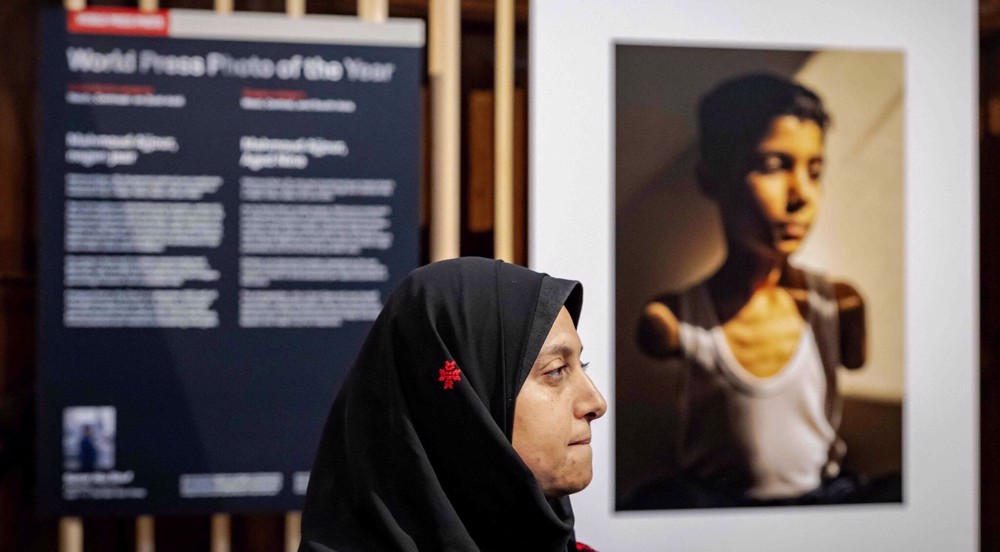
The jury at the World Press Photo condemned the genocidal war launched by the Tel Aviv-based regime that has killed nearly 18,000 children in Gaza.
“This photograph speaks to the long-term costs of war, the silences that perpetuate violence, and the role of journalism in exposing these realities. Without shying away from the corporeal impacts of war, the photo approaches conflict and statelessness from a human angle, shedding light on the physical and psychological traumas civilians have been forced to, and will continue to endure through industrial-scale killing and warfare,” the jury said in a statement.
The organization said the war has taken a "disproportionate toll on children," citing a December 2024 UN estimate that Gaza had the highest number of child amputees per capita globally.
As for Abu Elouf, she used her photograph to highlight the humanitarian crisis that engulfs Gaza: "What is the image you’re waiting to see to understand what’s happening inside Gaza?
Mahmoud is just a part of what’s happening there — to the children, the massive and terrifying amputations. Stop the war, enough is enough.”
Amputees in Gaza
Gaza already had a high number of amputees from previous Israeli wars in 2008–9, 2012, 2014, and 2021; however, the crisis has increased manifold since the regime’s latest genocidal war started on October 7, 2023.
The Gaza Strip now has the highest number of child amputees per capita anywhere in the world, the UN reported.
"Across Gaza, it is estimated that 4,500 new amputees require prosthetics, in addition to the 2,000 existing cases requiring maintenance and follow-up care," the U.N. humanitarian agency OCHA said in March.
“Children are injured daily with permanent disabilities due to the use of internationally banned explosive weapons, bringing the total number of injuries to 7,065 children, hundreds who lost their limbs, sight, or hearing.”
Majdi al Tattar: Gaza’s beloved amputee swimmer and gold medallist killed by Israel
— Press TV 🔻 (@PressTV) August 12, 2024
By @HumairaAhad_83 #HumansOfGazahttps://t.co/JuScVYuv4f
As per UNICEF estimates, between 3,000 and 4,000 children in Gaza have had one or more limbs amputated.
“Out of the 4,700 cases of amputation recorded, 18% of which (equivalent to 846 cases) were among children. These children face a double disaster due to physical and psychological disabilities, in addition to the collapse of the healthcare system caused by the destruction of hospitals and the blocking of medical supplies and prosthetics,” the OCHA report added.
In the face of Israel’s medical blockade on Gaza, the majority of the amputations are performed in substandard conditions as the besieged Strip lacks the means of proper sterilization, equipment, and even medical experts.
As per ICRC officials, getting artificial limbs into the Gaza Strip has been a challenge as the regime continues to block the humanitarian aid supply, including food, fuel, water, and medicine, from entering Gaza.
Thousands of Palestinians have suffered spinal injuries or lost their sight or hearing, according to OCHA and the International Committee of the Red Cross (ICRC).
Beyond the killing of nearly 52,000 Palestinians by the Israeli army, at least 113,408 people in Gaza have been injured, including at least 33,900 children, the Palestinian Ministry of Health said last month. The number has increased as the Zionist regime continues to bombard the besieged enclave.
Democrats, Republicans colluding to ‘kill’ Epstein files: CIA whistleblower
VIDEO | Press TV's news headlines
Russia intercepts 130 Ukrainian drones in overnight raid
Tehran summit: Afghanistan’s neighbors reject any foreign intervention
The centrality of Palestine: From Minnesota’s Somali youth to global anti-colonial struggles
US military aircraft nearly collides with civilian plane near Venezuela
Israel orders demolition of 25 residential buildings in West Bank refugee camp
VIDEO | Islamic Movement in Nigeria marks 10 years since Zaria massacre


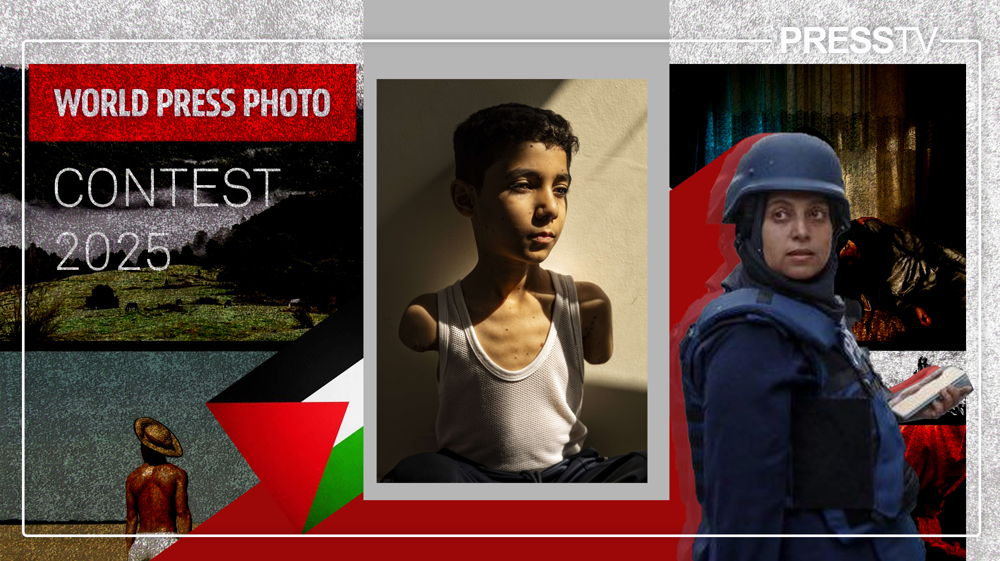
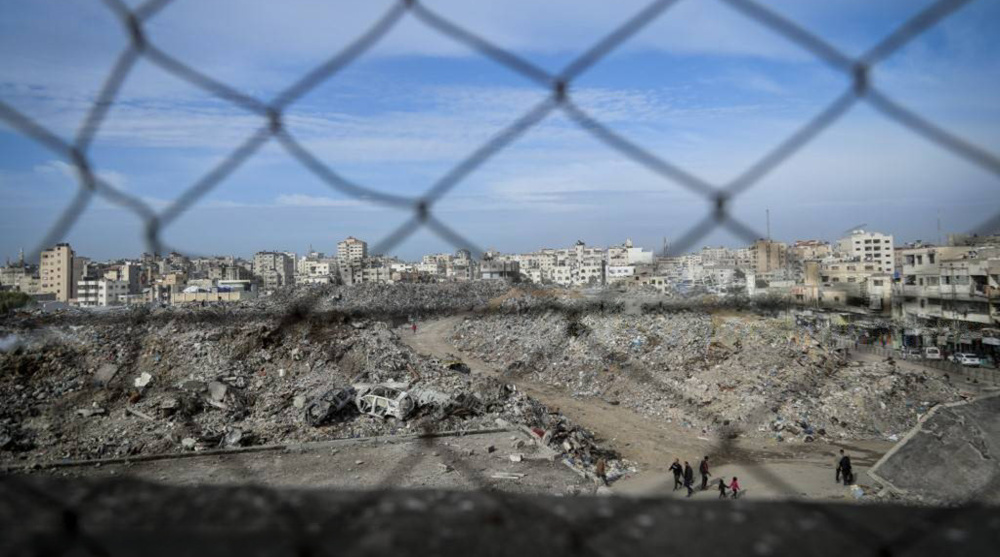



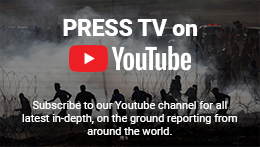

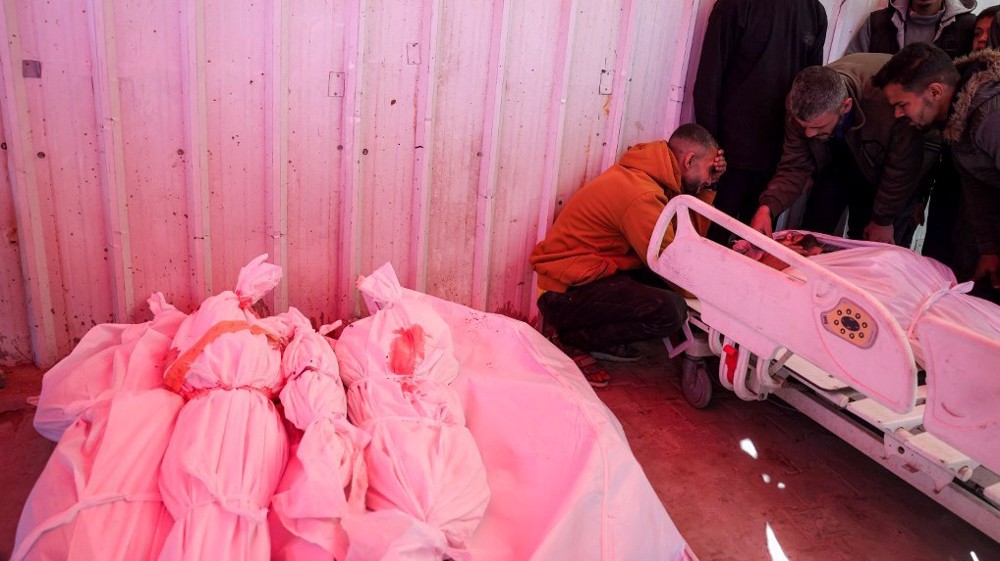
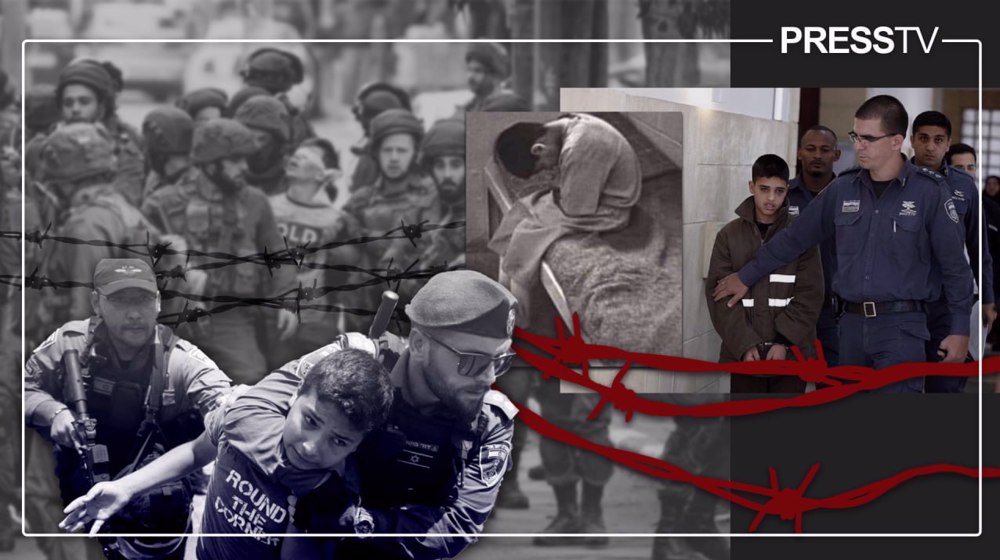
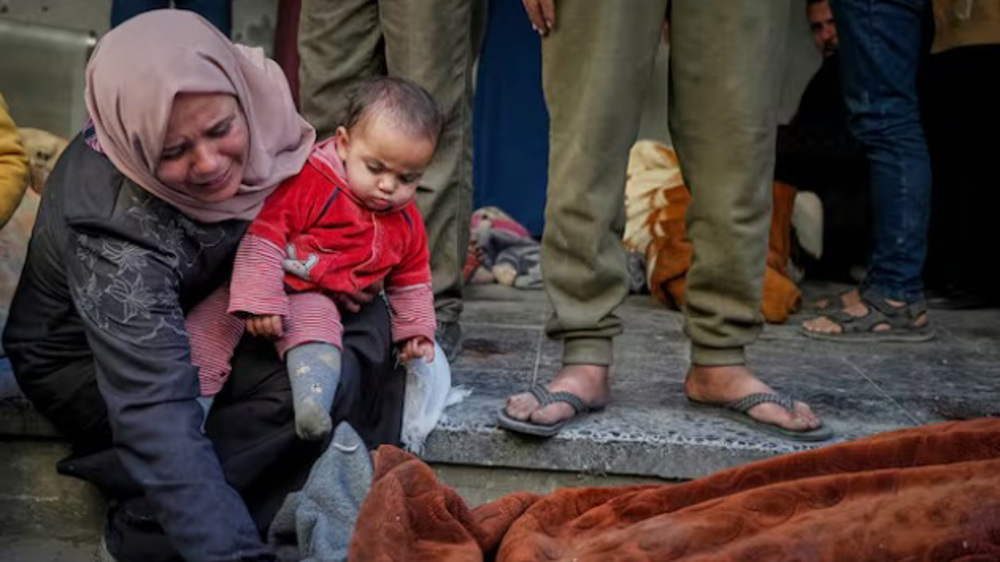



 This makes it easy to access the Press TV website
This makes it easy to access the Press TV website